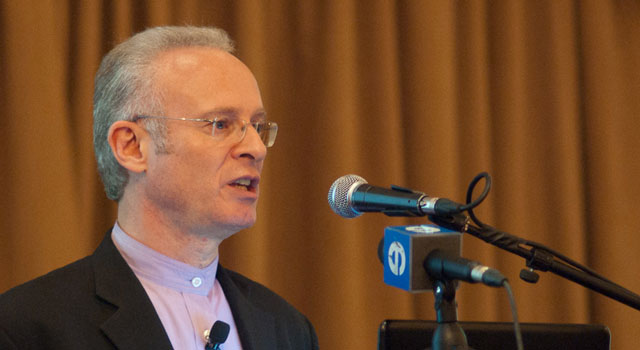
Big companies are splashing unprecedented amounts of cash into e-retail in South Africa, with the likes of online merchandiser Takealot.com recently raising R1bn of investment for expansion in the country and sub-Saharan Africa, and Naspers ploughing R5,6bn into e-commerce around the globe, with a portion of that earmarked for local development.
Traditional clothing, furniture, grocery and entertainment retailers in South Africa are also allocating increasing budgets to the cause. It’s now unusual to come across a results presentation that doesn’t report on online presence or strategy.
But online transactions currently account for less than 1% of the retail market in the country. In the words of PwC’s retail and consumer director, John Wilkinson, it’s “miniscule”.
So, why exactly are companies investing in this area so aggressively, and when will they begin to see returns on their massive outlays?
There is no doubt that the South African e-retail market is picking up speed faster than shopaholics throw items into their baskets at a discount sale.
In its results presentation last week, Naspers, the owner of Kalahari.com — South Africa’s largest online store — said e-retail revenue had increased by 64% to R20,3bn over the past financial year.
The number of people shopping online is increasing steadily. According to technology research company World Wide Worx, South Africa has an e-retail growth rate of between 30% and 40% per annum. This outstrips the growth of the digital sales of the 50 largest global e-retailers, which a study conducted by Deloitte pitched at 29% in 2012.
“There’s a significant trend towards people starting to shop online,” said PwC’s Wilkinson. The 2014 Mastercard Online Shopping Study found that 69% of South African respondents had made at least one purchase online in the past three months.
PwC’s Achieving Total Retail report, published in February, found that only 15% of respondents, from all nine of the country’s provinces, had never made a purchase online.
One out of four respondents who had shopped online had done so for the first time in the past year. Almost half of them (45%) had made their first online purchase in the past two years. Out of the 15 countries in the PwC survey, South Africa had the largest percentage of new users.
According to World Wide Worx MD Arthur Goldstuck, South Africa’s online retail market in 2013 was worth about R4,4bn. But growth is off a very low base, and remains insignificant when compared with the R500bn value of the overall retail market in the country.
And not every e-retailer is a success. Despite its hefty undertaking for e-commerce expansion, Naspers also recently closed down several online shops. These included fashion store Style36, furniture outlet 5Rooms, SA Camera, 5Ounces and Kinderelo maternity wear. According to Naspers, the closures were not due to poor performance from the companies but a strategy decision. The media colossus plans to expand in the “online travel space” instead. But it stands to reason that if returns had been top-drawer, the stores would likely still be in operation.
So, how soon will investors be seeing returns on their e-retail cash injections? According to Rod Salmon, a consumer equity analyst at Barclays, not very soon at all. “In my view, online retail as we see it overseas is going to be very small in South Africa for a very long time,” he told the Mail & Guardian. “The distribution side and cost is what kills most of these businesses in non-high-density areas.”
With distribution being the biggest hurdle for e-retailers across the globe, the UK and Korea — highly populous areas — are the most advanced online retailing markets in the world, said Salmon. “Distribution is the real challenge.”

This remains true of most other parts of the continent, where infrastructure is fragmented and consumers are increasingly accessing the internet via mobile phone, meaning that their ability to purchase a product is not necessarily coupled with urban dwelling.
By 2016, PwC expects that more than 32m of South Africa’s almost 51m residents will have Internet connectivity via mobile phone. As a result, e-retailers will need to become creative around distribution to get viable business models off the ground.
Analysts agree that this might come in the increased popularity of the “click and collect” model: consumers can choose their item and purchase it online, but need to go into a physical store to pick it up.
This is largely in line with what consumers are looking for in South Africa right now. When asked in the PwC survey what they wanted their favourite stores to provide by way of technology, the most repeated request was for shoppers to gauge a store’s inventory online. “People want the technology to check in real time what the store’s inventory is like,” said Wilkinson.
“We all know the frustration of driving to the shop and finding out that they don’t have the colour or size you wanted.”
Collection points
Another way the distribution challenge could be overcome is by exploring the use of “collection points”, said Salmon. Global retailer Amazon is testing the notion of allowing consumers to buy an item online and then collect it from a central point.
Economies of scale would need to be explored. If the traditional e-retail model were to really take off in South Africa, “we probably need one of the distribution companies to step up and become the sole distributor for all online deliveries”, he said.
Either way, physical stores in South Africa are not going to disappear any time soon. “The majority of South Africans still enjoy shopping at a physical store,” said Wilkinson. “They like the ability to see, touch, feel and try the merchandise.
“The online component is really enhancing the ultimate, total shopping experience.”

Kim Reid, chief executive of Takealot.com, says “I personally don’t believe that distribution is the biggest challenge in e-retail”. His company has overcome the obstacle by buying a controlling share in Mr Delivery.
What was originally a fast-food delivery business now dispatches Takealot.com’s products, Pick n Pay groceries and First National Bank credit cards as well. Reid says they might consider delivering products for competing e-retailers.
Despite its ambitious strategy, Takealot anticipates turning a profit “somewhere in the medium term”.
“We won’t make profits in the near term because we’re building scale,” said Reid. “We are well funded to grow aggressively. Depending on how we go about it, we will be profitable in time.” — (c) 2014 Mail & Guardian
- Visit the Mail & Guardian Online, the smart news source




